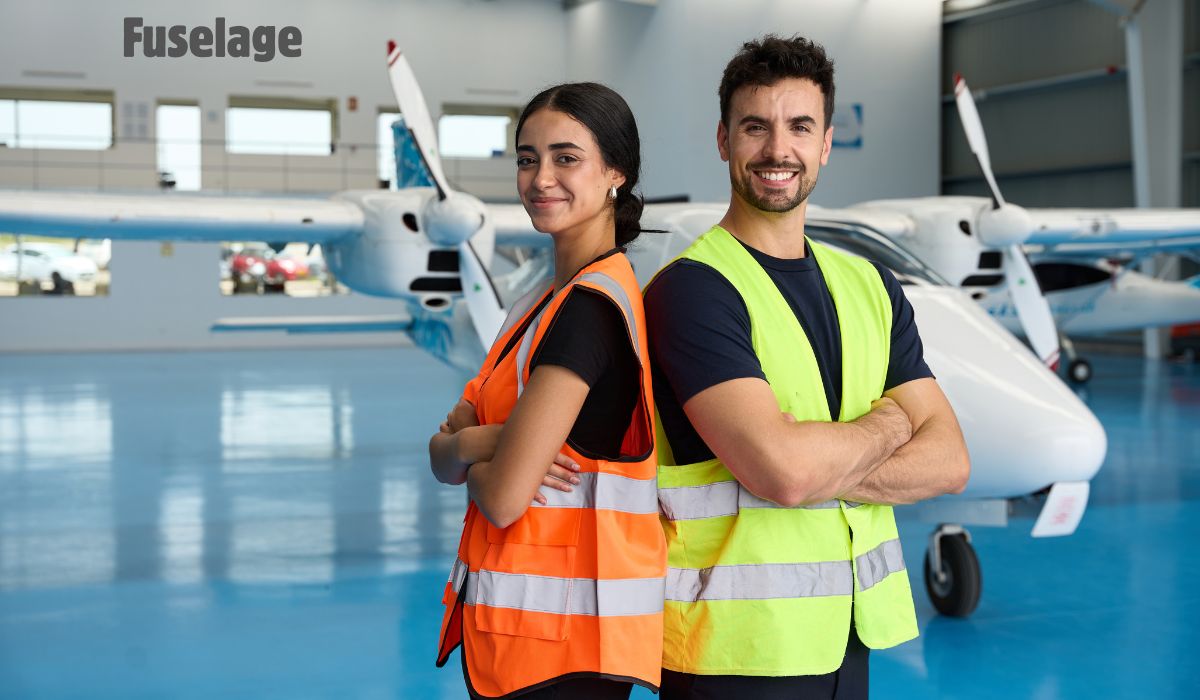
Aircraft may seem like a single, seamless machine soaring through the skies, but every airplane
is a sophisticated assembly of structural components, each playing a crucial role in ensuring
safety, performance, and efficiency. From the wings that provide lift to the fuselage that houses
passengers and cargo, understanding these components gives insight into the engineering
marvels behind modern aviation.
The Fuselage: The Central Backbone
At the heart of every aircraft is the fuselage—the main body that connects all other components.
It serves multiple purposes: housing passengers, cargo, and avionics, and providing structural
integrity for the entire aircraft. Typically designed with a cylindrical shape, the fuselage must
balance strength and weight. Modern aircraft often use lightweight yet durable materials like
aluminum alloys and composites to ensure fuel efficiency without compromising safety. Internal
frames, stringers, and longerons reinforce the fuselage, distributing stress from aerodynamic
forces during flight and ground operations.
Wings: Lifting the Aircraft
The wings are the most recognizable structural components, responsible for generating lift and
supporting the aircraft in flight. They are carefully engineered to handle enormous aerodynamic
forces while remaining lightweight. Wing structures generally consist of spars, ribs, and skin
panels. The spars run spanwise from root to tip, acting as the primary load-bearing element,
while ribs maintain the wing’s airfoil shape and distribute forces. Wing skins cover the structure
and contribute to aerodynamic efficiency. Modern wings may also incorporate fuel tanks, control
surfaces, and advanced materials such as carbon-fiber composites to maximize strength while
reducing weight.
Empennage: Stability and Control
The empennage, or tail assembly, provides stability and control during flight. Comprising the
horizontal stabilizer, vertical stabilizer, elevators, and rudder, this structure ensures the aircraft
maintains balance and responds accurately to pilot inputs. The horizontal stabilizer prevents
unwanted pitch motions, while the elevators allow the pilot to control the nose’s up-and-down
movement. The vertical stabilizer, together with the rudder, controls yaw and helps the plane
track straight. Like wings and fuselage, the empennage must withstand aerodynamic stress and
is often constructed with lightweight aluminum or composite materials.
Landing Gear: Supporting Takeoff and Landing
Though often overlooked, the landing gear is a critical structural component. It absorbs the
shocks of takeoff, landing, and taxiing, protecting both the aircraft and its occupants. Landing
gear may be retractable or fixed, depending on the aircraft type, and includes wheels, struts,
brakes, and shock absorbers. The design must balance strength, durability, and weight.
Engineers carefully calculate load distribution to ensure the landing gear can safely handle the
aircraft’s weight under various operating conditions.
Engines and Pylons: Integrating Power with Structure
While engines provide propulsion, they are intricately connected to the aircraft’s structure
through pylons or nacelles. These mounting points must handle significant forces, including
thrust, torque, and vibration, without compromising the aircraft’s integrity. Proper integration
ensures that engines operate efficiently while minimizing stress on surrounding structural
components.
Control Surfaces: Maneuvering with Precision
Control surfaces, including ailerons, flaps, spoilers, and slats, are extensions of the wing and tail
structures that enable precise maneuvering. Ailerons control roll, flaps assist with lift during
takeoff and landing, spoilers help with descent and braking, and slats improve aerodynamic
performance at low speeds. These components require careful structural support and linkage to
ensure reliability under repeated stress cycles.
In Conclusion
An aircraft’s structure is far more than a simple assembly of metals and composites; it is a
sophisticated, interconnected system engineered to achieve the perfect balance of strength,
flexibility, and efficiency. Key components—from the fuselage that serves as the central
backbone, to the wings that provide lift, and the tail that ensures stability—work together
seamlessly. Many of these critical parts, such as landing gear, engine mounts, and structural
supports, often utilize 4140 steel, a high-strength alloy known for its toughness, fatigue
resistance, and durability under extreme stress.
Appreciating these elements not only showcases the ingenuity behind aerospace engineering
but also underscores the precision and attention to safety that every flight demands.
The next
time you watch a plane soar into the sky, remember that beneath its sleek exterior lies a
meticulously engineered framework, with 4140 steel and other materials forming the backbone
of this airborne marvel.




